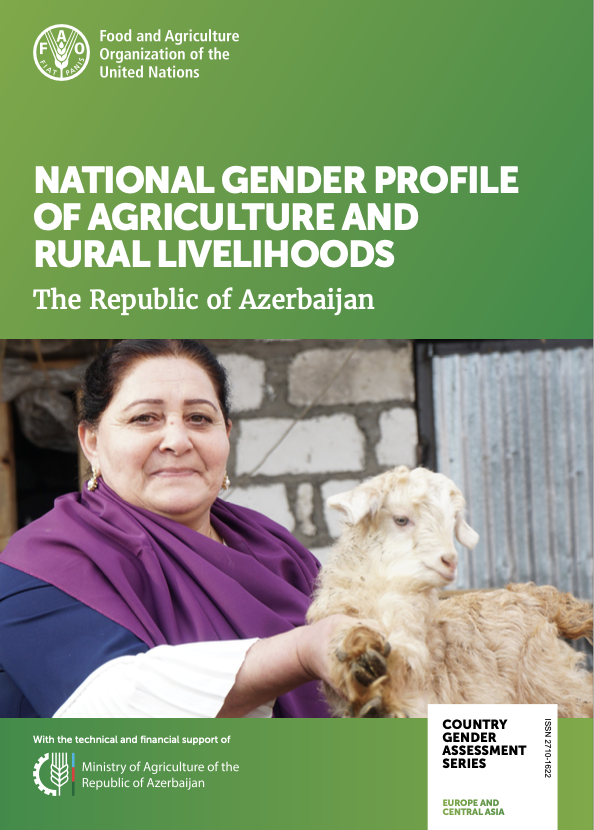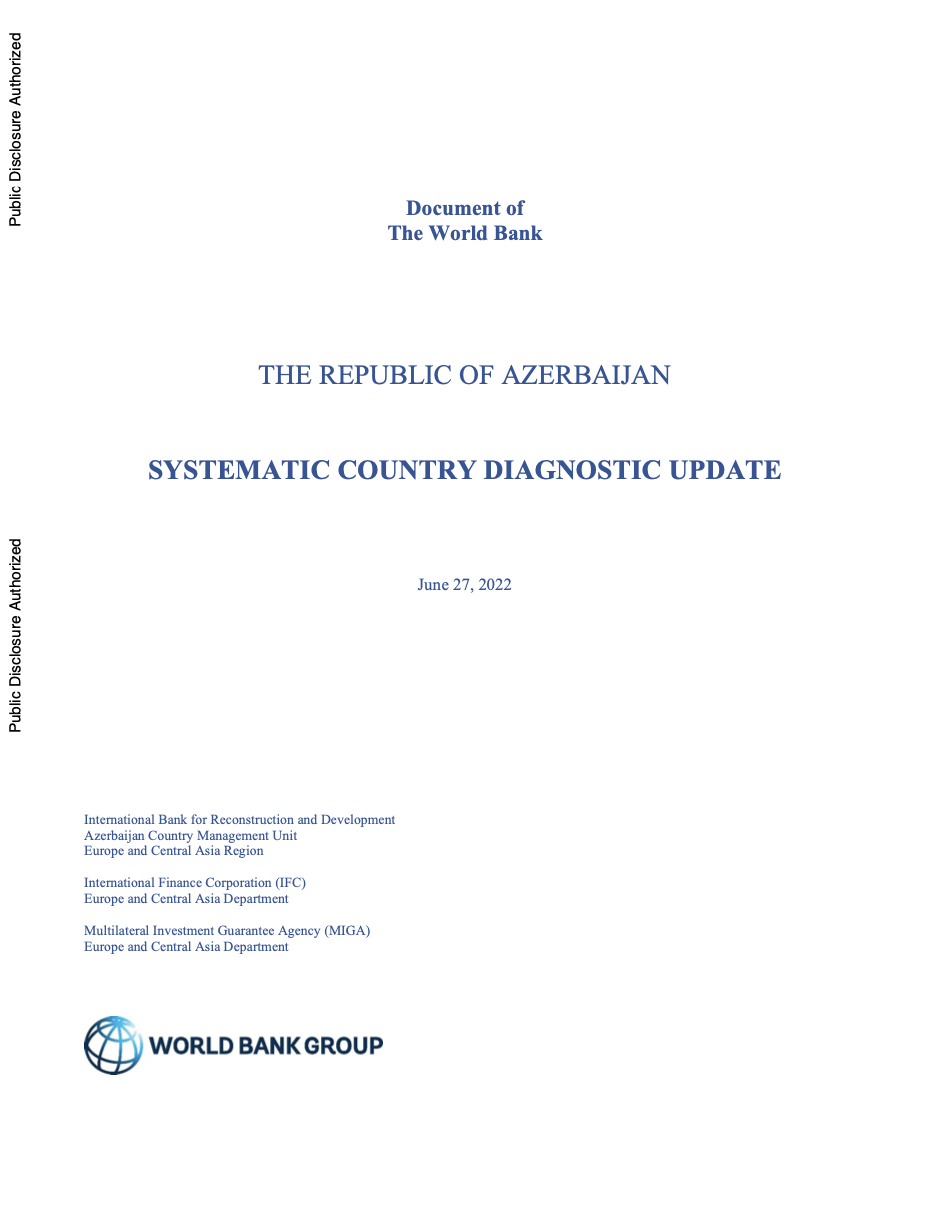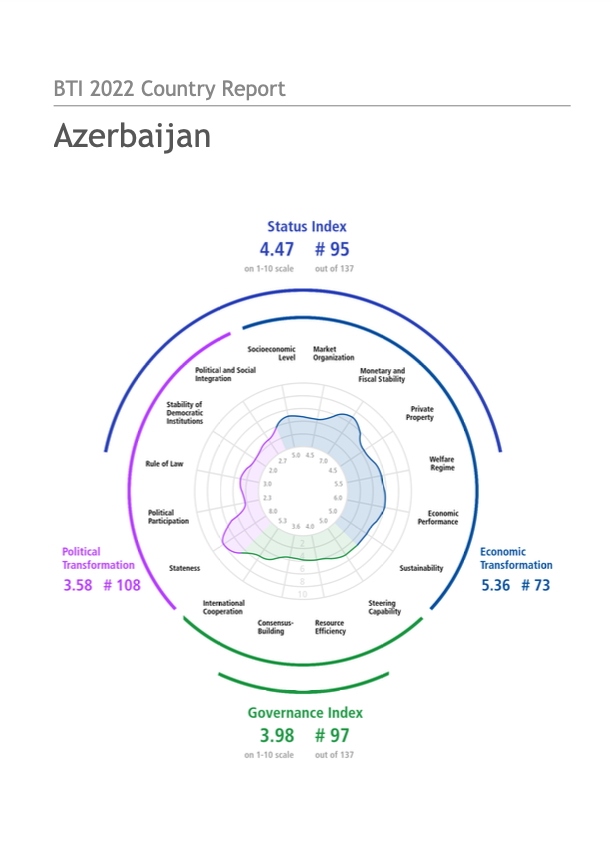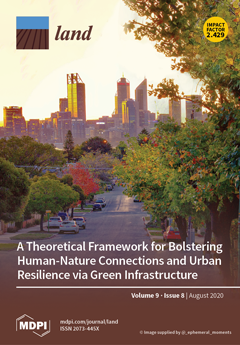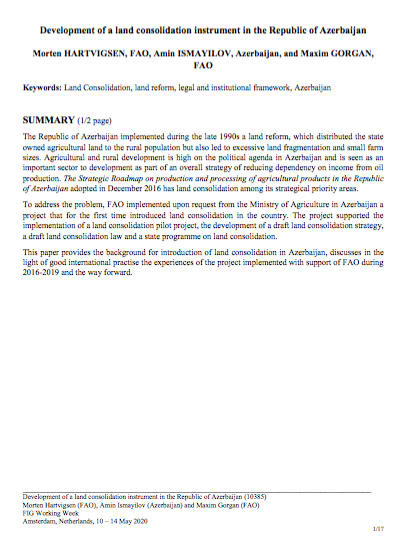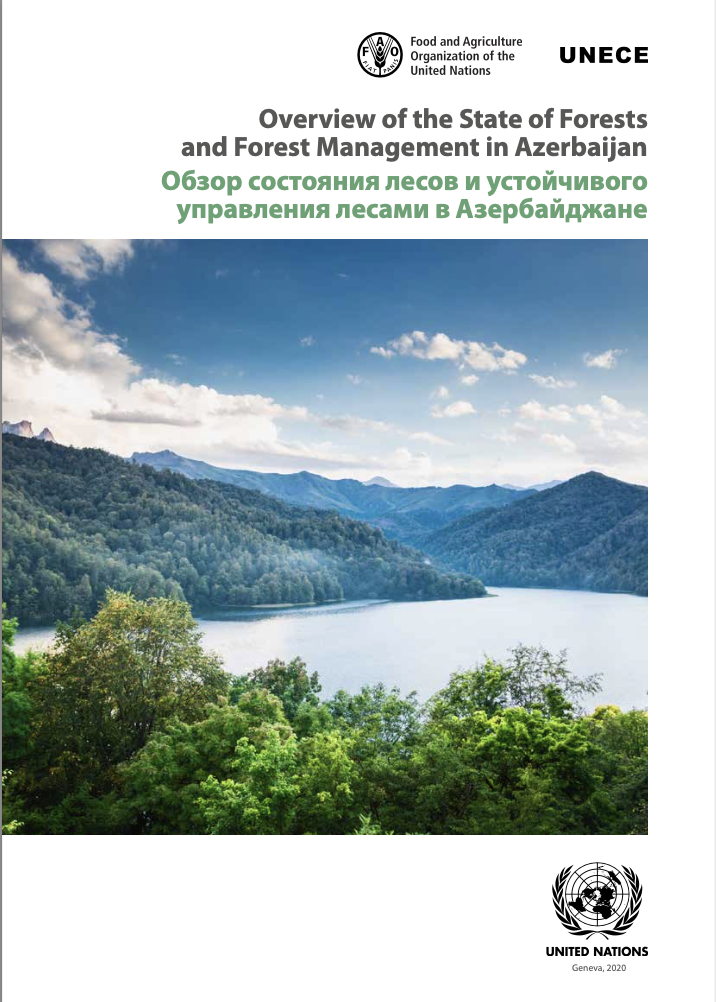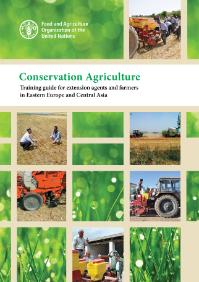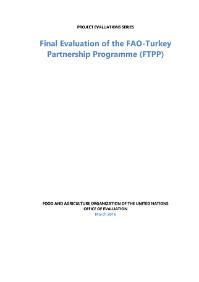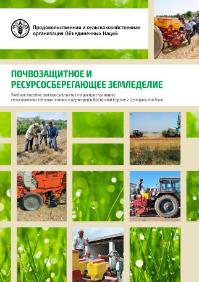This country gender assessment (CGA) for the Republic of Azerbaijan was undertaken as part of FAO and national commitments to promote gender equality while integrating a gender perspective into its operations. The resulting CGA report focuses on the intersections of gender, agriculture and rural…
The Azerbaijan Systematic Country Diagnostic (SCD) Update 2022 identifies the most critical challenges facing the government in the effort to achieve the country’s national goals and the twin goals of eradicating extreme poverty and promoting shared prosperity. It also identifies policy…
During the reporting period, the consolidation of authoritarian rule in Azerbaijan continued. Snap parliamentary elections in February 2020 did not meet international standards for free and fair competition. However, some notorious high-ranking state officials were fired, and corrupt local level…
According to the Constitution adopted on 12 November 1995, Azerbaijan is a democratic, secular, unitary republic based on the rule of law. The country is governed by the president, who is directly elected for a seven-year term by popular vote. Azerbaijan’s vast oil reserves attract foreign…
On 27 September 2020, Azerbaijan went to war with Armenia on a scale not seen since the ceasefire of 1994. The conflict ended in another cease- fire on 10 November 2020, however, in addition to the theatre of war, the conflict has been prosecuted and continues to be fought post-ceasefire,…
Diversified livelihoods combining farming, livestock keeping and non-farm income are characteristic of many rural households worldwide. For the Central Asian and Caucasian region, livestock keeping is especially important in terms of land use and socio-cultural heritage. We contribute to the…
Azerbaijan has set the course for the economy to reduce its dependence on oil by promoting new drivers of growth. This publication emphasizes the need for diversification, particularly in the agriculture, tourism, and manufacturing sectors. By 2025, under the Strategic Roads Maps of the…
The Republic of Azerbaijan implemented during the late 1990s a land reform, which distributed the state owned agricultural land to the rural population but also led to excessive land fragmentation and small farm sizes. Agricultural and rural development is high on the political agenda in…
Overview of the State of Forests and Forest Management in Azerbaijan derives from the project on the state of forests in the Caucasus and Central Asia and presents the forest resources and the forest sector of Azerbaijan, including trends in, and pressures on forests. The overview describes…
Agriculture in Eastern Europe and Central Asia is diverse, and has great potential to revitalize the economy of the countries in the region via improved productivity (efficiency) and higher total yield for food, fodder and fibre crops. Conservation agriculture can rise to the major challenge of…
This evaluation assessed strategic positioning of the first phase of the FAO-Turkey programme, its results and contributions, sustainability, as well as coherence and catalytic effects. It noted that the programme facilitated a beneficial collaboration between the Turkish Government and regional…
Сельское хозяйство Восточной Европы и Центральной Азии является разнообразным по характеру и обладает огромным потенциалом для развития экономики стран региона посредством повышения урожайности и общей продуктивности продовольственных, кормовых и технических культур. В этом плане, почвозащитное…

